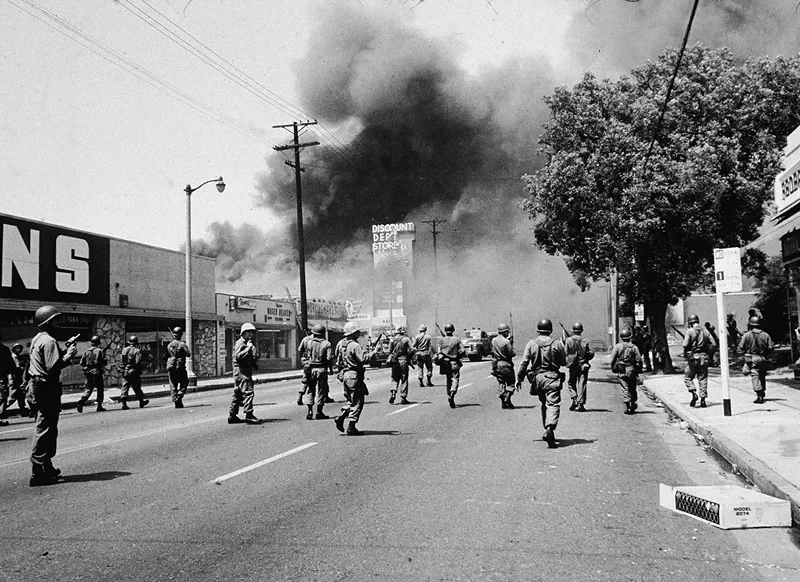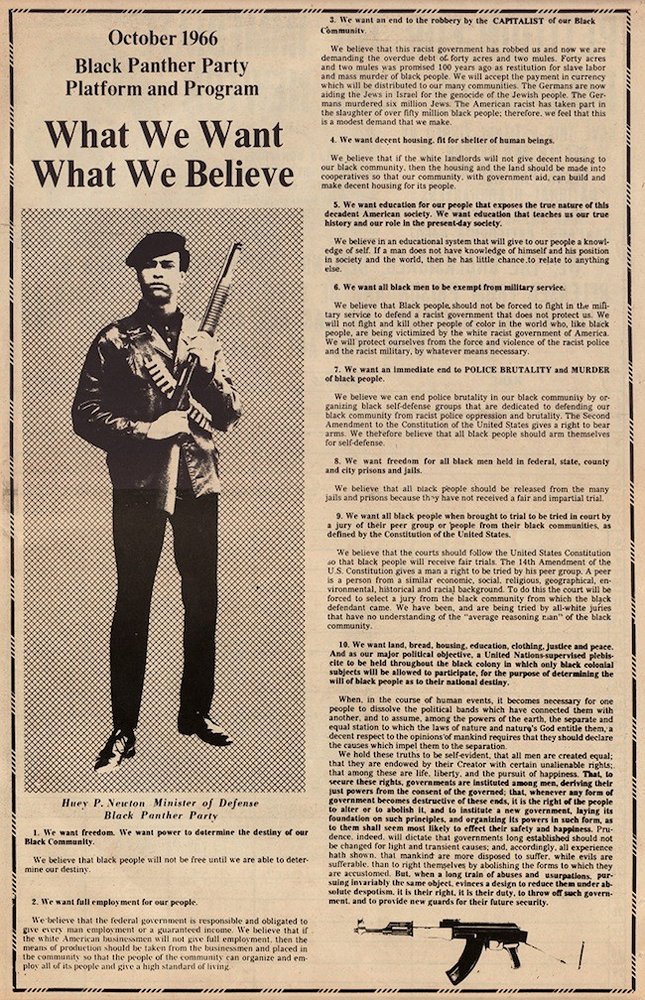The African-American Civil Rights Movement originated in the early days of slavery in the U.S. as they fought for basic human rights and civil liberties. Oppression and discrimination against African Americans were a prevalent part of American Culture at the time and still shine through in society today. These fights for freedom were widely seen in the 18th and 19th centuries when African Americans used the hidden escape routes of the Underground Railroad. This was a noteworthy example of African Americans’ resilience in the face of slavery. Their efforts began to change the attitudes of both Northern and Southern white Americans, who eventually contributed to providing shelter to slaves on their way to freedom. During the Reconstruction era, the 13th, 14th, and 15th Amendments to the U.S. Constitution were passed which progressed the Civil Rights movement when formerly enslaved people were granted citizenship and civil rights like voting. However, Jim Crow laws were enacted to suppress the African American population. This was accomplished through legal discrimination, but it was also enforced through violence and threats. African American activists in organizations such as the National Association for the Advancement of Colored People (NAACP) fought against this institutionalized racism. The development of the African-American Civil Rights Movement continued into the 1960s and 1980s.
African-American Civil Rights Movement: Fight Against De Facto Discrimination
Learn all about the Fight against De Facto Discrimination!
The Origin of the Movement
Early 1930s
Nation of Islam
- The Nation of Islam is a religious and political organization founded in 1930 by Wallace D. Fard Muhammad in Detroit, Michigan.
- The focus was primarily on Islam and Black Nationalism, both subject to controversy in the 1930s.
- Known for their promotion of self-help and racial equality, Fard, who claimed he was from Mecca, said he wanted to help the African American community. Which to a good extent, they did.
- Although suppressed for a majority of the war due to anti-war beliefs, the Nation of Islam expanded greatly during the 1950s. The movement became more and more plagued during the 50s-60s however, and many members were arrested for accounts of the crime.
- Overall, the main goal of the Nation of Islam was to improve the social, economic, and spiritual condition of African Americans in the United States, achieving all this through independence, self-determination, and pride.
- The successes for the Nation of Islam included, the development of many social programs, the development of cultural pride, and overall strides in achievcing racial equality for all.
February 27, 1965
- This video is Ossie Davis making a speech about the death of Malcolm X a few days after he died
- Davis urges those living comfortably to seek discomfort and fight for change.
- During the speech, Davis said, "Get up off your knees. Come out of your hiding place. If your hiding place is gold, come out from behind it. If your hiding place is prestige, come out from behind it."
- Malcolm X was arrested for burglary and sentenced to 10 years in prison in 1943
- Malcolm X began to study Islam in prison and learned a lot about the culture
- Malcolm X was an African-American leader who became well-known during the 1950s and 1960s
- He became involved with the Nation of Islam which was a black nationalist group
- He quickly became one of the biggest members of the organization. He did not like the nonviolent approach that many other leaders took such as Martin Luther King
- Malcolm X left the Nation of Islam and formed his own organization called the Organization of Afro=American Unity.
- He was against white supremacy and American politics that he felt were inherently racist
- Malcolm X was eventually assassinated in the Audubon Ballroom located in New York City.
- Malcolm X also wrote a widely known autobiography that detailed his life as he attempted to fight for change
- Despite the controversy surrounding him, Malcolm X fought and achieved change.
1965 - 1967: Chicago Freedom Movement
Chicago Freedom Movement
- The Chicago Freedom Movement was a civil rights campaign led by Martin Luther King Jr., James Bevel, and Al Raby
- Its main goal was to get rid of systematic racism within housing, education, and employment.
- They used protests, boycotts, and sit-ins to challenge the racist ideals of the city of Chicago
- One of the most notable events was the March on Cicero, which took place on July 12, 1966. This event all started when an African-American family tried moving into the city of Cicero, which is near Chicago. When White Americans burnt the building, the National Guard had to be called to subdue the violence. After this, MLK Jr. and other people rallied with each other and protested throughout the city. A video was made about it. You can view it here ----->
-The movement was led by many organizations, including the Southern Christian Leadership Conference (SCLC), the Congress of Racial Equality (CORE), the National Association for the Advancement of Colored People (NAACP), and the Coordinating Council of Community Organizations (CCCO).
-The SCLC was created by MLK Jr. along with many other activists. The SCLC partnered with the CCCO, which was run by Al Raby. All these organizations banded together to fight systematic racism in housing.
- The movement successfully negotiated a fair housing agreement with the city government in August 1966. African-Americans were finally allowed to have a fair voice about where they lived, but this was only in Chicago. This ultimately led to the Fair Housing Act of 1968.
8/11/1965 - 8/16/1965

Armed National Guardsmen march toward smoke on the horizon during the street fires of the Watts Riots in Los Angeles. After six days of unrest, over a thousand people had been injured — and 34 had died.
Watts Riots - 1965
- The Watts Riots occurred in the Watts neighborhood of Los Angeles, California, between August 11-16, 1965.
- The riot was sparked by years of racial tension, poverty, and police brutality experienced by African American residents of the area.
- The riot began on August 11th with the arrest of Marquette Frye, a 21-year-old black man, for drunk driving in the Watts neighborhood.
- The arrest of Frye and the police's use of extreme force led to confrontations between residents and law enforcement.
- The anger and frustration felt by residents resulted in six days of widespread looting, property destruction (worth $40 million), and arson.
- The riot caused the death of 34 people, injured over 1,000 individuals, and led to the arrest of more than 3,500 people.
- The National Guard was called in to restore order and imposed a curfew in the neighborhood for several days.
- The Watts Riots occurred during the peak of the civil rights movement and brought attention to racial justice and police brutality towards minorities, as well as economic segregation in urban areas.
- Different groups, such as the U.S. government, law enforcement, and the African American community, had varying perspectives on the riots.
- The government blamed the rioters and emphasized the need for law and order.
- Law enforcement defended their actions, describing the situation as "violent" and "hostile."
- The African American community called for justice and sought to highlight years of discrimination and inequality.
Here is a look at the observations of Martin Luther King Jr. on the riots: Link
1966

Black Panther Party Platform Program
The Black Panther Party: 1966
The Black Panther Party (BPP) was a revolutionary group with an anti-police brutality ideology based on Black nationalism, armed self-defense, and socialism. The BPP was founded on October 1966 in Oakland, California by Bobby Seale and Huey P. Newton. The BPP acted vocally to affirm Black pride and power. The organization created a document titled, “PLATFORM AND PROGRAM OF THE BLACK PANTHER PARTY” in 1966 when it was founded. This document outlines the goals of the BPP, which were to seek empowerment for the African American community by demanding basic human rights. Some examples of what they demanded were decent housing, food, education, and medical care. The BPP advocated for community control over law enforcement and demanded that all falsely accused African Americans be freed from prison. This organization worked to create job opportunities for the African American community in order to create economic self-sufficiency for this minority. This organization also wished to modernize the education system and teach true African American history.

